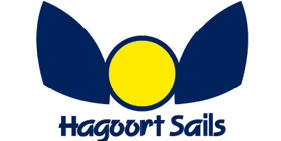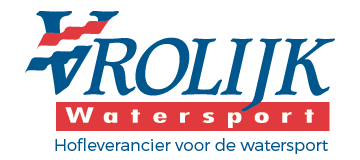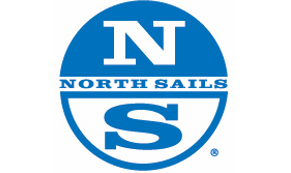An Old-School Maverick Fastnet - Last Episode
4 september 2017 - After rounding we were set for a long downhill (downwind) run back to Land’s End, and we readied the smaller running spinnaker. The autopilot held momentarily before the lashing failed, and we improvised ..........
After rounding we were set for a long downhill (downwind) run back to Land’s End, and we readied the smaller running spinnaker. The autopilot held momentarily before the lashing failed, and we improvised the hoist by butt-steering and slowly setting the tack line, sheet and then hoisting. The dark blue filled, and the shallow wind angle drove us quickly ahead and away from the smaller boat. By way of celebration and in honor of my country of birth, Patrick came up from below with a special surprise – instead of a typical broodje, he cooked cheeseburgers. Unique in taste and presentation, it will nonetheless forever hold a place in my canon of favorite cheeseburgers.
For then next 12 hours and through another crystal-clear night we flew over the water, riding waves and roaring along in gusts, hitting a record 15.16 knots during one grin-inducing long surf. Groups of dolphin regularly came by to play, and in many ways the dolphin reflect their country of origin. The English dolphin are friendly but somewhat reserved, while the Irish dolphin are joyous, unrestrained, and as unrestrained as an Irish band at closing time.
We gave away much time early with tactical miscues, and continuous hand steering is les than optimal, but our spirits continued to grow as we held our position or pulled ahead of nearby higher rated boats, and hopefully began belatedly to claw back a few places toward respectability.
Rounding Bishop’s Rock, south of the Scyllys, we pressed on under our now beloved spinnaker, several hours later reaching Lizard Point – the last headland before a straight line to the finish in Plymouth. We debated whether to cut close to the point, with Patrick not yet as vocal as Ken or Raymond in these matters, and as the tide would soon turn favorably we decided to push close in to try to catch a favorable race. Rounding the Point we steered up higher to the wind, just as it picked up as it accelerated around the headland, and though heeled hard we sped along at 10 kts over ground. We pushed ahead of a few boats rounding further out, and within the next hour most of the boats with running spinnakers either took a less favorable deep line, or reverted to white sails.
In the last 30 miles we sailed closely by the fully crewed Triple Lindy, an American boat no less, who gave us only a few minutes on rating. Both crews kept focused in this final race-within-a-race, and as the wind moved further forward they dropped their spinnaker and reverted to white sails. We pressed longer on our trusty reaching spinnaker and edged a hundred yards ahead, but as the wind worked even further forward we finally decided to drop the spinnaker. Lacking the autopilot we talked through the steps, which involved me holding tack line and halyard with different numbers of turns on winches, and belly-steering as Patrick went forward. The crew of Triple Lundy took in the show as we bore away and safely completed the drop, and they moved slightly ahead as we set and trimmed our jib.
We weren’t done though, and looking back they watched us set and unfurl our A0, a small close running spinnaker. We pulled abeam, and soon ahead, and it was our turn to watch a crew scurry around. Sometimes competition and testosterone clouds reasoning, particularly among Americans, and they decided to re-set their spinnaker and try to trim for the shallow angle. In the closing miles we pulled further and further ahead as they struggled to keep the sail filled and the boat on course, finally loosing control and sending thAn Olse troops back to the bow to take the nasty thing down. We held the A0 a while longer for good measure, and with the wind now well ahead we furled and dropped it smartly to hold our lead over the Yanks.
With over 600 miles completed we took in the lights of Portsmouth a mere 4 miles away, but entering the bay the wind dropped quickly to only a few knots. The tide had just begun to turn against, and we slowed to barely a knot over ground. I immediately relived the nightmare windless finish in the 2011 Fastnet, idling for hours within a few hundred yards of the line, and my dark mutterings contrasted with Patrick’s eagerness to finish. We had a tough race and nothing could be crueler than to stop, or even anchor, in a wind lull before the finish. Within a few minutes the wind gods relented and a gentle breeze rose up, tickling the water, pushing Maverick ahead at 3 kts, and raising spirits ever so slightly. We finally crossed the breakwater and waved as a horn sounded and a finish light flashed from the old light tower. Time for a handshake and smile before dropping sails and wordlessly motoring to our berth in Plymouth Marina. We were allowed to motor a past the barge used for the fireworks competition, and as a final treat the barge erupted with shrieking rockets and bombs bursting in air as we passed a hundred meters away.
For most sailors three parts of the Fastnet forever hold their hearts and memories – the start, with pomp and ceremony followed by a few hours of intense close-quarters combat; the almost spiritual rounding of the iconic Fastnet Rock; and the finish, the emotional culmination of the preparations, struggles, and hard work. The first Fastnet is always special, yet each brings new memories, challenges and satisfaction. In the top tier of doublehanded sailing the autopilot is an essential third crew – some of the top boats use them up to 90% of the time, because as one leading skipper notes ‘It steers better than I do’. Perhaps someday we will also have sensors and systems that trim better than people, a glimpse of the future seen on the America’s Cup boats. I'll be happy to remain in the past.
We ended up a respectable 10th in the IRC2B class and top third of IRC 2, and 23nd in the 60-strong Doublehanded class. We also bested the other three J-120s, the closest finishing nearly four and half hours behind. The Dutch Doublehanded contingent also made an impressive showing -- from Ajeto's contrary start to their second place finish, Junique's earning 8th position and Wim van Slooten's Firestorm finishing strongly in 12th place. On one hand we would have had an easier time and better result with the autopilot -- but we wouldn’t trade any finishing places for this very special old-school, hand-steered, broodje-fuelled Fastnet.
[Photo courtesy the talented and charming sailor-photographer Bob Bradford]
Maverick's Fastnet Race - Episode 2
3 september 2017 - Within a minute I heard a ‘clunk’ and Maverick slowly turned to windward and luffed. I yanked the wheel and steadied her. A clunk on a boat is never a good sound, and by definit... Lees verder
From heaven to hell and back
5 september 2017 - Meer dan 600 mijl non-stop op zee, een overweldigende natuur om je heen, op het gebied van tactiek en strategie een grootse uitdaging en de beste shorthanded toppers van Europa... Lees verder













